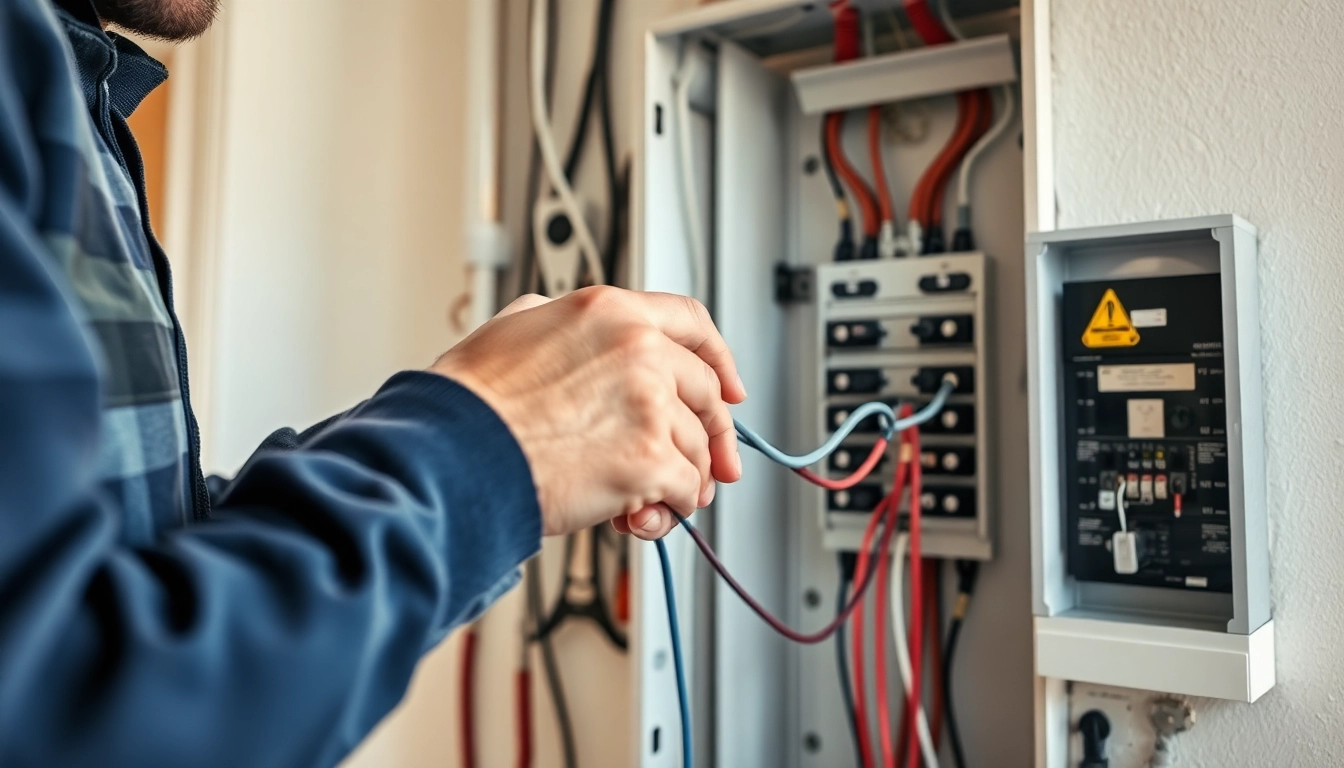What is an Electrical Panel Upgrade?
Defining the Electrical Panel
The electrical panel, often referred to as the breaker panel, is a crucial component of a home’s electrical system. It serves as the central hub where power from the utility company distributes electricity to the various circuits throughout the house. Typically made up of circuit breakers or fuses, the panel helps protect your electrical circuits from overload and shortages by automatically shutting down the circuit when issues occur. Understanding the function and importance of your electrical panel is essential for maintaining a safe and efficient electrical system.
Why Upgrade?
An Electrical Panel Upgrade is often necessary due to a variety of reasons, including increased electrical demands, outdated technology, and safety regulations. As homes evolve, so do their electrical needs. The rise in smart devices, electric vehicles, and energy-efficient appliances means that older panels may not be equipped to handle the increased load. Upgrading to a more robust panel often leads to improvements in safety and efficiency, ultimately reducing the risk of electrical fires and other hazards.
Different Types of Panels
There are several types of electrical panels available, each designed to meet specific needs. The most common include:
- Fuse Boxes: These are older systems that use fuses to protect circuits. They are largely outdated and replaced by circuit breaker panels.
- Standard Circuit Breaker Panels: These are the most commonly used panels, utilizing circuit breakers to shut off electricity when an overload occurs. They come in various amperage ratings, typically ranging from 100 to 200 amps.
- Smart Panels: Equipped with digital technology that allows homeowners to monitor their energy usage in real time, smart panels can help manage energy efficiency significantly.
- Sub-Panels: Used to distribute power to specific areas of a home, such as garages or workshops, sub-panels can allow for easier management of the electrical load.
Signs You Need an Electrical Panel Upgrade
Increased Electrical Demand
One of the clearest indicators that it’s time to upgrade your electrical panel is if your electrical needs have increased. This can include the addition of new appliances that require more power, such as air conditioning units, electric ovens, or electric vehicle chargers. If you notice frequent demands on your power supply, it may indicate that your current panel cannot handle the load efficiently.
Frequent Breaker Trips
If your circuit breakers are frequently tripping, this is a sign your panel is struggling to meet the electrical needs of your home. Breaker trips are a protective measure, indicating that your electrical system may be overloaded. If you find yourself resetting breakers often, it’s prudent to consult a licensed electrician about the potential need for an upgrade.
Old or Outdated Panels
Older panels, particularly those made before the 1980s, may not only struggle with modern electrical demands but may also fail to meet current safety codes. Upgrading ensures compliance with these regulations and enhances the safety of your home. Symptoms of outdated panels can include rusting, cracking, or visible wear and tear.
The Costs Involved in an Electrical Panel Upgrade
Average Cost Estimates
The cost of upgrading an electrical panel can vary significantly based on several factors. On average, homeowners can expect to pay between $800 and $4,000. This includes the cost of the new panel, labor, and any other additional materials. The complexity of the installation, the size of the panel, and the specific location of the installation can all influence the final cost.
Factors Influencing Costs
Several factors can affect the total cost of an electrical panel upgrade:
- Panel Size: The size and capacity of the new panel will significantly influence cost. Standard residential panels typically range from 100 to 200 amps.
- Labor Rates: Depending on the location and existing wiring conditions, the hourly labor rates of electricians may vary. Rates can fluctuate between $50 and $120 per hour, adding to the total cost.
- Upgrades and Modifications: If additional wiring, installation of grounding systems, or other modifications are needed, it can add to the overall cost of the project.
Potential Savings and Incentives
In some areas, homeowners may also benefit from financial incentives, tax credits, or rebates, especially when upgrading to energy-efficient systems. Exploring local and federal programs can help mitigate the cost of upgrades. Additionally, investing in a suitable panel can result in energy savings over time, further offsetting the initial expenditure.
Choosing the Right Electrician for Your Upgrade
Qualifications to Look For
When it comes to hiring an electrician for your upgrade, it’s essential to seek qualified professionals. Ideally, you should look for individuals or companies with state licensing, insurance, and a solid reputation in the community. Look for electricians with experience specifically in panel upgrades and be sure they are up to date with local electrical codes and regulations.
Questions to Ask Before Hiring
Before hiring an electrician, consider asking the following questions to ensure you’re making an informed decision:
- What is your experience with electrical panel upgrades?
- Can you provide references from past clients?
- What guarantees or warranties do you offer on your work?
- What is the estimated time frame and cost for the upgrade?
- Will you obtain the necessary permits and inspections?
Understanding Estimates and Contracts
Before any work begins, you should receive a detailed written estimate. This estimate should include all costs related to the project, from labor to materials. Ensure you understand each item in the estimate and how it will affect the final cost. When you have decided on a contractor, make sure you have a written contract that outlines the scope of work, timeline, and payment schedules.
Post-Upgrade Considerations
Inspection and Approval Steps
After your electrical panel upgrade, a thorough inspection is typically required. Local building codes often mandate that an inspector review the work to ensure it has been performed correctly and complies with safety standards. Ensure your electrician completes all necessary paperwork for permits and inspections.
Maintenance of Your New Electrical Panel
Although electrical panels require minimal maintenance, occasional checks are necessary. Regularly inspect for signs of wear and tear, such as rust or discoloration. Keeping the area around the panel clean and ensuring proper ventilation can help prolong its life. Additionally, understanding how to reset breakers and what to do in case of overloads can help maintain system efficiency.
Future-Proofing Your Electrical System
Finally, consider the future of your electrical needs. As technology advances and the number of power-consuming devices in homes increases, upgrading now to a higher capacity panel may save you the trouble of another upgrade later. Planning for the future can also involve investing in smart technology to optimize efficiency and reduce energy costs. Assessing your electrical needs every few years can prevent unexpected costs and safety issues down the road.


